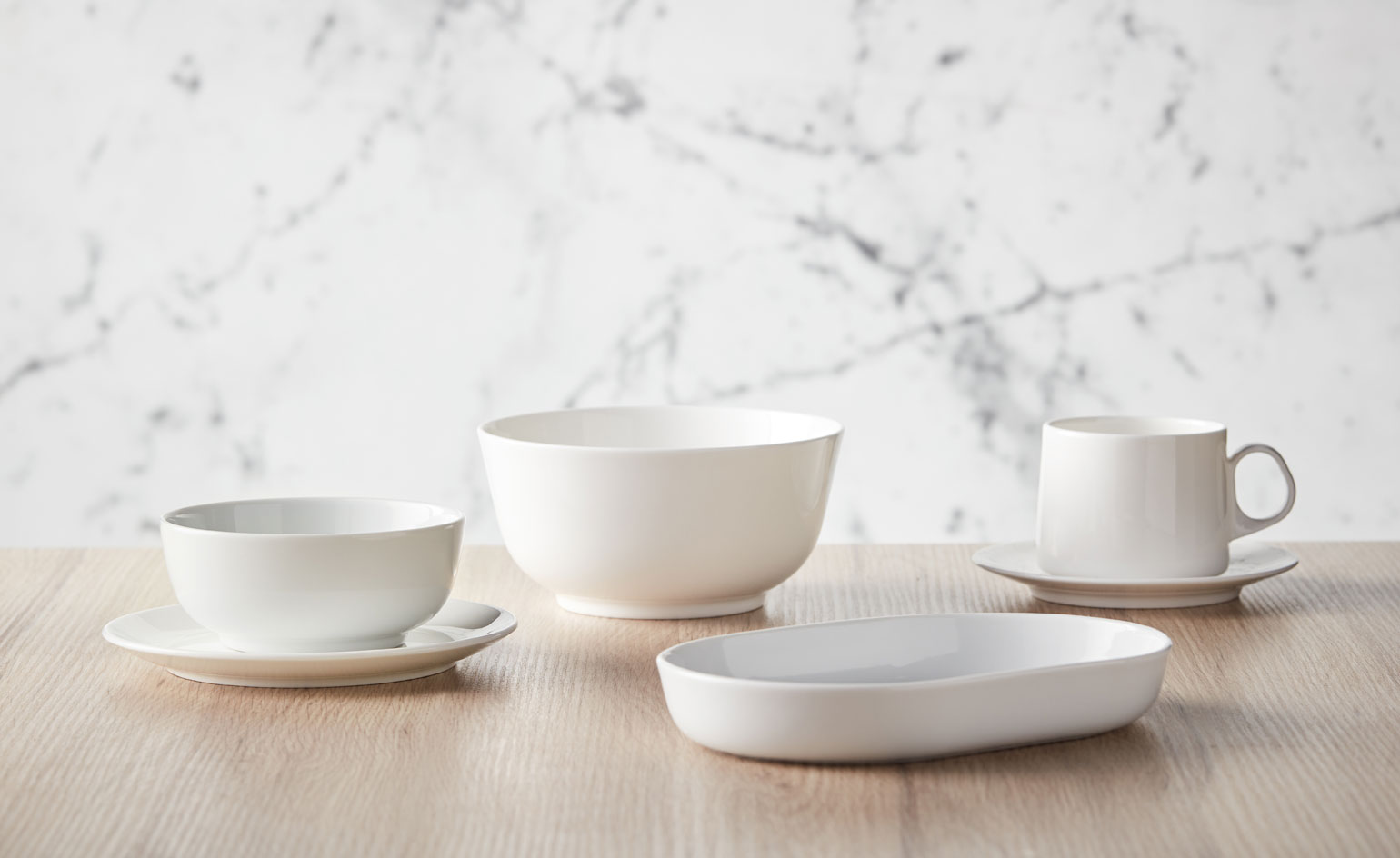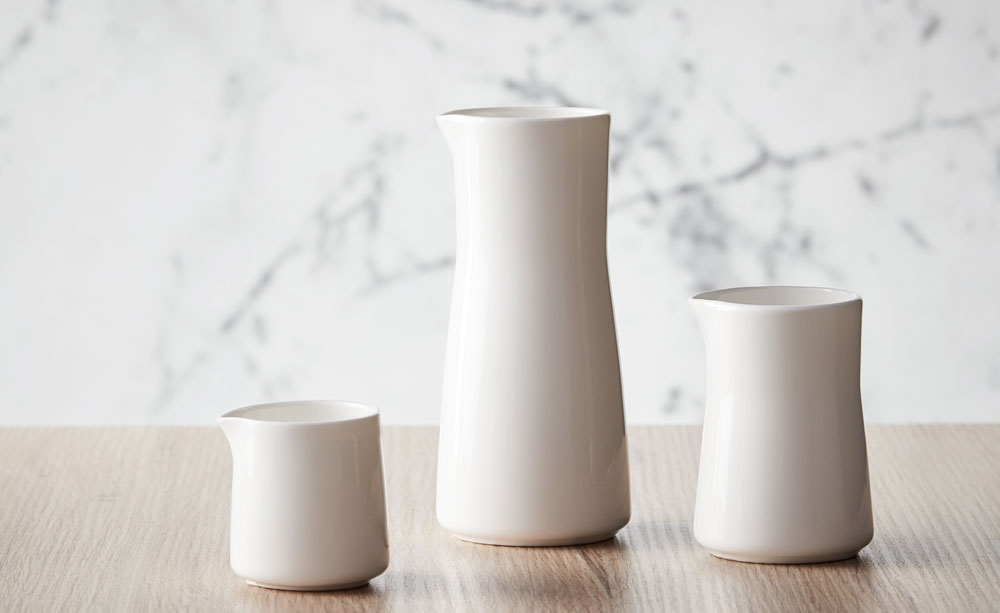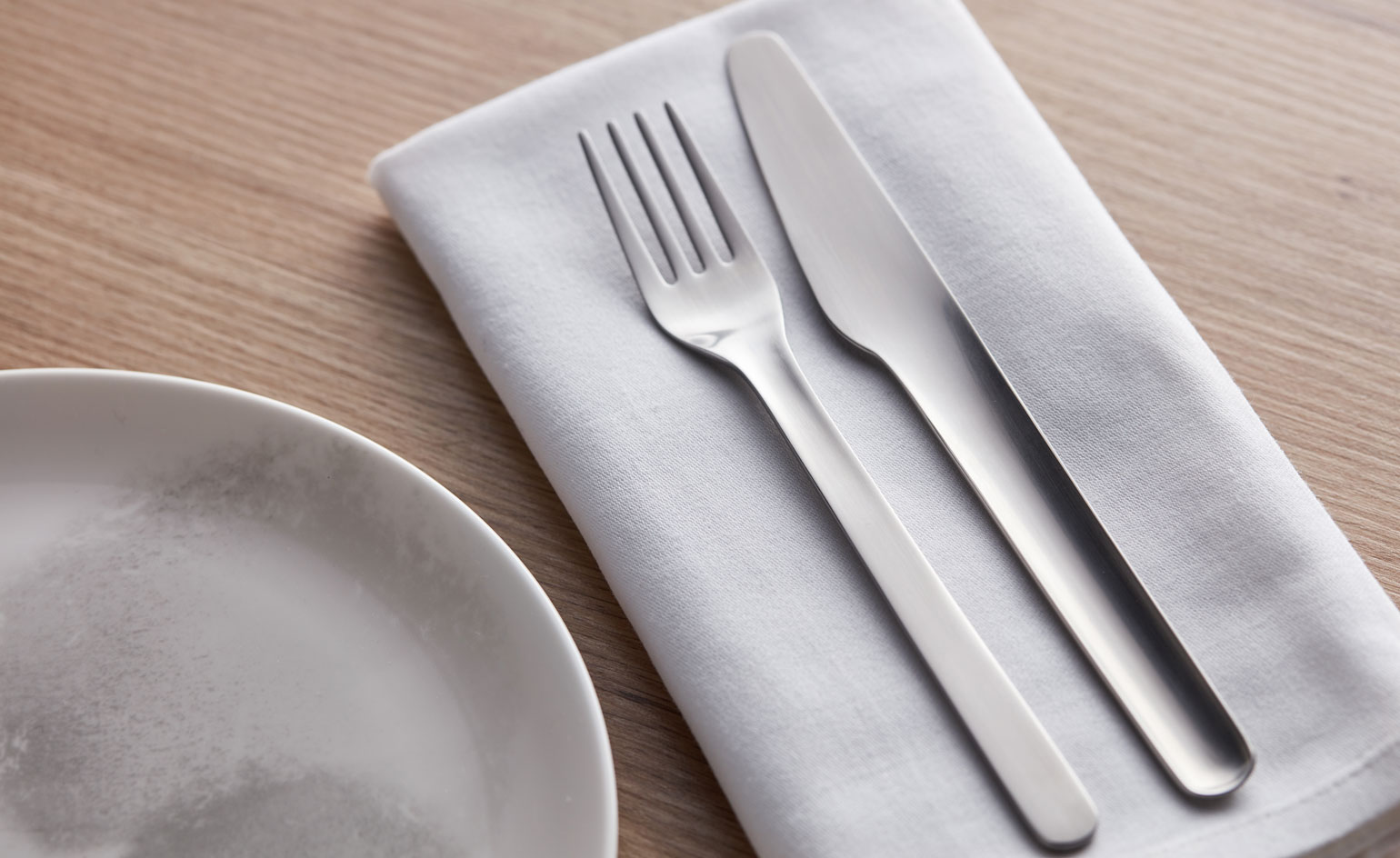Qantas takes high design to the skies with new tableware range

How can a storied Japanese ceramic house, a renowned Australian chef and a leading international airline rethink the design of functional tableware, to deliver a collection driven by elegance, ergonomics and an ethical conscience? Enter industrial designer David Caon. He has not only conceived Qantas’ new 16-piece ceramic collection with Noritake and the airline’s creative director of food, beverage and service, Neil Perry (plus glassware and eating utensils), but has accented them with aesthetic flourishes and bespoke quirks – albeit very calculated ones.
Marking ten years since Marc Newson created a dining set for Qantas with Noritake, Caon’s pieces will appear in December 2017 when the new cabin interiors he also designed for the 787 Dreamliner crafts hit the airways. The tableware collection will then arrive in the airline’s International First, Business and Premium Economy, Domestic Business, First and Business Lounges and Qantas Clubs there after.
Caon’s design objective focused on what he terms ‘graceful utilitarianism,’ marrying lightness with durability and quality. He was tasked with minimising the airline’s carbon footprint by reducing the weight of the new range (he did this by 11 per cent) resulting in an average annual saving of 535,000kg of fuel.

Bone china vessels, by David Caon and Noritake, for Qantas
The ceramic range – milky white bone china with a lustrous sheen and two porcelain pieces required to tolerate intense heating processes – needed to withstand industrial washing, service and stacking at 40,000ft and transportation to and from aircrafts.
‘I avoided hard corners and sharp angles where I could,’ explains Caon. ‘The 800 mm curve was a driving design rule we applied – it gives continuity across the range as well as being in harmony with the interiors crafted for the 787 Dreamliner.’ This style is recognised from the arch on the cups, through to the raised rims of the ceramic platters and plates that deter slippage and spillage.
Teapot lids lock into their bases to avoid clinking in the galley and during service, while handles slant outwards at their base to encourage a snug grip. Caon adds, '[These are] nuances that customers may not notice, but add to the experience.’
Even the brush-furnished stainless steel flatware includes knives with grooved handles echoing this signature curve, affording a comfortable clasp. The glassware, made from lead and barium-free crystal, ‘allowed for a thin profile with a beautiful clarity and feel without compromising its strength’.
Special pieces including a signature plate and canapé dish featuring a maker’s mark subtly nodding to the craftsmanship of artisanal pieces. A grey ink motif with lighter ghostly tones breaks up the uniformity of the collection. The tableware will in time be available to purchase.

The glassware, made from lead and barium-free crystal, ‘allowed for a thin profile with a beautiful clarity and feel without compromising its strength’

A grey ink motif with lighter ghostly tones breaks up the uniformity of the collection

Brush-furnished stainless steel flatware includes knives with grooved handles echoing this signature curve, affording a comfortable clasp
INFORMATION
For more information, visit the Caon Studio website and the Qantas website
Receive our daily digest of inspiration, escapism and design stories from around the world direct to your inbox.
-
 New tech dedicated to home health, personal wellness and mapping your metrics
New tech dedicated to home health, personal wellness and mapping your metricsWe round up the latest offerings in the smart health scene, from trackers for every conceivable metric from sugar to sleep, through to therapeutic furniture and ultra intelligent toothbrushes
-
 Out of office: The Wallpaper* editors’ picks of the week
Out of office: The Wallpaper* editors’ picks of the week'Tis the season for eating and drinking, and the Wallpaper* team embraced it wholeheartedly this week. Elsewhere: the best spot in Milan for clothing repairs and outdoor swimming in December
-
 How Stephen Burks Man Made is bringing the story of a centuries-old African textile to an entirely new audience
How Stephen Burks Man Made is bringing the story of a centuries-old African textile to an entirely new audienceAfter researching the time-honoured craft of Kuba cloth, designers Stephen Burks and Malika Leiper have teamed up with Italian company Alpi on a dynamic new product